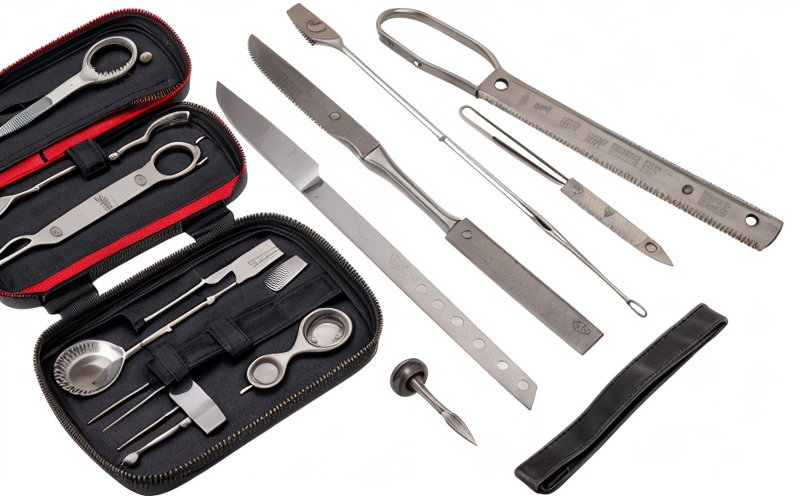ISO 13402 Scalpel Blade Retention Force Testing
The ISO 13402 series of standards is a cornerstone in the medical device industry, particularly for ensuring the safety and effectiveness of surgical instruments. This service focuses on the specific testing method defined by ISO 13402-5:2016, which addresses the retention force of scalpel blades. Compliance with this standard ensures that the blade remains securely attached to its handle under various conditions, minimizing the risk of blade dislodgment during surgical procedures.
Scalpel blades are critical components in surgeries and other medical procedures due to their sharpness and precision. The retention force test is a key step in ensuring the integrity of these devices, thereby protecting patients from potential hazards such as accidental blade release or injury. This service involves rigorous testing protocols that simulate real-world use scenarios, providing manufacturers with reliable data to support product safety claims.
The testing process begins with thorough preparation of the scalpel blades and handles according to ISO 13402-5 guidelines. Specimens are then loaded into a specially designed fixture on the retention force tester. The machine applies a calibrated load in a controlled manner, simulating the forces encountered during use. Upon reaching the specified force level, the system records the maximum force required to dislodge the blade from its handle.
The results of this test are critical for quality assurance and compliance with international standards. They help manufacturers identify potential design flaws or material weaknesses that could compromise product safety. Additionally, these tests provide valuable insights into the durability and reliability of surgical instruments under various conditions, enabling continuous improvement in product design.
Applied Standards
| Standard Number | Description |
|---|---|
| ISO 13402-5:2016 | Method for Determination of Retention Force of Blades in Scalpels |
Industry Applications
- Surgical instrument manufacturers seeking ISO compliance and safety certification.
- Medical device companies needing validation of product design and manufacturing processes.
- R&D teams evaluating new material or blade designs for surgical scalpels.
- Quality assurance departments ensuring consistent production standards across batches.
Use Cases and Application Examples
- Testing new blade designs to ensure they meet or exceed retention force requirements.
- Investigating complaints from field use to identify potential issues in the product design or manufacturing process.
- Comparing different materials used in scalpel blades to determine their impact on retention force and durability.
- Validating the effectiveness of blade attachment methods during quality control checks.





